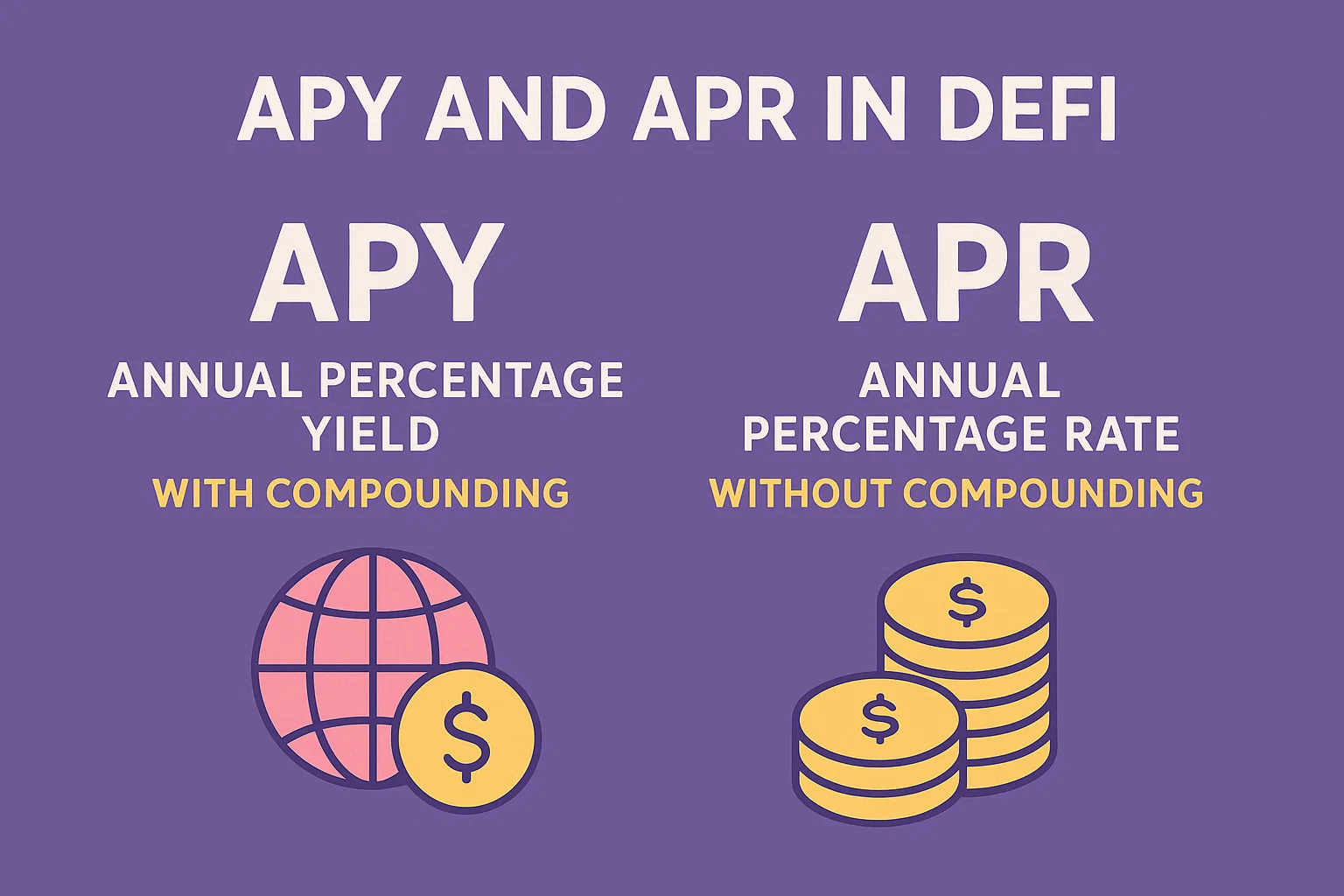Breaking News
Popular News




Enter your email address below and subscribe to our newsletter

What is APY and APR in DeFi? These are two of the most commonly used financial terms in decentralized finance—and often misunderstood.
At bit2050.com, we break it down in simple terms. Whether you’re staking, yield farming, or lending crypto, understanding the difference between APY and APR could significantly impact your earnings.
APR (Annual Percentage Rate): This is the yearly interest without compounding.
APY (Annual Percentage Yield): This includes compound interest, showing your actual earning potential over time.
In short:
APR = Simple Interest
APY = Compound Interest
APR does not include reinvested profits.
APY assumes profits are reinvested.
With APR, time doesn’t affect returns.
APY grows faster the more often interest is compounded (daily, weekly, etc.).
APY gives a more realistic view of DeFi returns.
APR is useful when compounding isn’t available.
Most staking platforms advertise APY.
Lending platforms often display APR.
Compounded earnings (APY) might lead to more frequent taxable events than APR.
APY rewards are often distributed more frequently (e.g., daily).
APR-based returns may be less frequent.
If you’re actively reinvesting, go for APY.
If you’re not compounding, APR helps track flat yield.
A: APR is easier to display and calculate, especially for platforms that don’t auto-compound.
A: APY is usually better if the protocol compounds your earnings. APR is better for manual strategies.
A: Yes, you can convert APR to APY using the compounding formula, especially for daily or weekly interest.
A: Yes—unless there’s no compounding, in which case they are equal.
A: Use DeFi Llama or DefiRate for real-time APY/APR data.
Understanding what is APY and APR in DeFi is crucial for maximizing your yield and selecting the right investment strategies. While APY offers more growth through compounding, APR provides clarity for fixed returns.
Keep learning with bit2050.com — your trusted DeFi education partner.